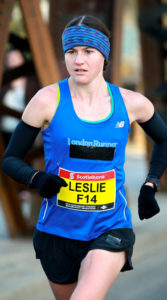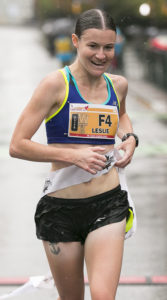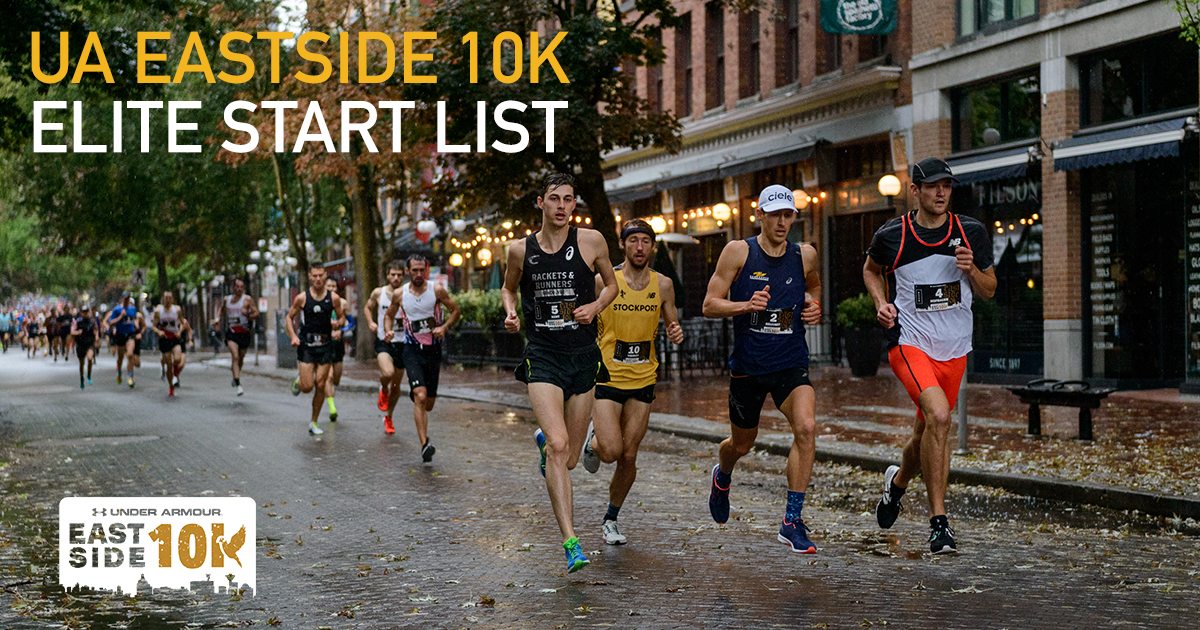
October 4th, 2016
The Toronto Waterfront Marathon has had a special significance for me in my running career. Although the media may be most familiar with my breakthrough race last year, I first ran this event in 2011 and competed in the half marathon. It was always meant to be a stepping stone towards my marathon debut, but being here in Toronto in 2011 really solidified my goal of becoming a marathoner and representing Canada at the distance. In 2011, Eric Gillis, Reid Coolsaet and Dylan Wykes were all chasing the Olympic marathon standard in Toronto. At the time I was a 1:18 half-marathoner with some decent results under my belt, but I lacked experience in road racing. Alan Brookes and the Canada Running Series crew were nice enough to give me an elite bib and put me up in a hotel with the rest of the elite runners for the weekend. Seeing Canada’s top marathoners go after fast times here in Toronto was inspiring, and it got me really excited about running the distance.
My path to the marathon wasn’t an easy one, and in my first few attempts I struggled to make it to the start line healthy. In 2012 I had planned to make my marathon debut at STWM, but an illness I picked up during my taper derailed my plans to do so. It took until fall 2014 to complete my first marathon. Before fall 2015, I had made four attempts at the marathon in three years and only finished two. My personal best stood at 2:39, which was much slower than what I thought I could run at the distance. Leading into STWM in 2015, I wanted to give the marathon another go, but I was starting to think that maybe the distance wasn’t for me and that I would have to step away from it if I failed to run to my potential again. Even with these doubts in the back of my mind, I worked hard through the summer and had a very good marathon buildup.

STWM 2015
By October I knew that I was in the best shape of my life and that I was ready to run a fast time. My main goal was to break 2:35 and I knew my best chance of doing so was to run an even pace. Early on I let some of the other Canadian women go ahead at a faster pace while I stuck to my plan of running 5k splits in the 18:10 to 18:20 range. Seeing the halfway split of 1:16:34 was a little unnerving, because it was only a second slower than when I had raced the half marathon flat-out here in 2011. Yet the effort felt right and soon enough I started passing some of the elite women who had gone out faster than I had. As I approached the 32k mark, I knew that it was going to be a good race. In my previous marathon attempts, something had either gone wrong in the buildup itself or in the first ten miles of the race. But this time I reached 32k with no issues and while I was tired and my legs were starting to feel beat up, I knew I could run a strong last 10k.
While I was still pushing hard and fighting for every second in the final few kilometers of the race, I also let myself enjoy the moment and take it all in. I had been keeping a close eye on my splits and I knew that I was on pace to be well under 2:34. I felt relief I would finally have a good result to show for my years of struggle at the marathon. I finished in 2:33:23, which was a personal best by over six minutes. I had experienced a lot of frustration in attempting the marathon over the previous three years, so I was happy and relieved to have finally put it together and execute a good buildup and race. As I head into this year’s Toronto Waterfront Marathon, I can go in with confidence from a successful run last year.
Training for STWM 2016, Strava
While I am part of a track club (London Runner), I do most of my mileage and marathon-specific workouts on my own. I coach the junior program (high school and late elementary), so I am not able to run at our group workouts. Once in a while I will jump in a club workout when we are running longer intervals, but at most of our workouts I want to be available to athletes to answer questions and give them their splits or feedback. Sometimes I will run with the Runners’ Choice marathon clinic before I get into a specific marathon build to have some company.
Once I am in a marathon build (usually around twelve weeks for me), I run solo for most of my sessions. One reason for this is so I can be specific on pace during my workouts and long runs and really focus in on running at the right effort. Getting a good sense of race pace is so important for the marathon and I can best do that by running on my own and feeling it out. I think my ability and willingness to run on my own and push myself hard in workouts when no one else is around is one of my greatest strengths and it is a skill marathoners need to have. Running workouts and long runs on my own has helped me in the latter stages of long races where there are often big gaps between runners and I need to push hard on tired legs to hang on to my goal pace.
Most of my running is on the paved multi-use path systems that runs along the Thames River in London, Ontario. My place is a 500m run from Springbank Park, the site of the longstanding Springbank Road Races event, where running greats like Jerome Drayton and Bill Rodgers used to duke it out in one of North America’s premier running events. It is a great year-round training location, as the paths are plowed and salted during the winter. My running routes tend to be very repetitive, but I love the consistency of a familiar route.

Eastside 10k 2016 Champion (33:17)
My buildup towards STWM is fairly similar to what I have been doing for my last few marathons builds. The important aspects of my training program are high mileage, lots of work at marathon pace, and long runs that are a bit quicker than my normal easy running pace. During this build my big mileage weeks were over 130 miles (or 210 km). I want to go into each workout or long run a bit tired from the volume to get the proper training effect of running hard on tired legs. My key workouts are longer intervals at marathon pace, like 4 X 5k and 5 X 5k earlier on and building up to 26k continuous at marathon pace about three weeks out from the race. Every other week I will do a long run between 36 and 42k at the faster end of my easy pace, which for me is between 4:00 and 4:10 per kilometer. Usually I like to run the full marathon distance twice in a buildup, as it is a good confidence boost and I think it helps prepare my legs for the pounding of race day.
Most runners who know me can attest to the fact that I’m a self-admitted Strava-addict. I love that site both for its functionality as a training log and because it lets me be a part of a social network that I would describe more as a community of runners. I have noticed that cyclists on Strava can be very competitive, while most of the runners I have encountered on there are very supportive of each other. Sure, I get as annoyed as anyone else when someone breaks one of my segment records. But runners I know on Strava are always quick to give kudos, congratulate someone after a good race, or offer words of encouragement after a bad run or workout. It has been fun to follow other runners training towards STWM this fall. I follow Kevin Coffey, who is training in Vancouver right now, and Erin Burrett, who is doing a stint at altitude in Flagstaff. Despite being hundreds of miles apart, I can see the progress of other runners taking different paths towards the same event.
There is a reason why I put everything I do on there, the good runs and the bad. (No, it’s not just to be at the top of the mileage challenges.) Elite runners aren’t robots; we struggle through the bad days just like everybody else. While it is always a goal of mine to be consistent in my training and racing, there are times when it gets really tough, and there are days when I don’t run very well. I’m not sure if I’ve inspired anyone who follows me on Strava, but if I have, I hope I have inspired them to stick with it through the bad patches and keep chasing their goals. I have certainly had a lot of ups and downs in my running career thus far. Yet the journey is worth it and those big breakthroughs feel great. I want to share both my successes and failures with others because I believe the whole picture is more inspiring.
Follow Leslie on Twitter, Instagram and Strava.







